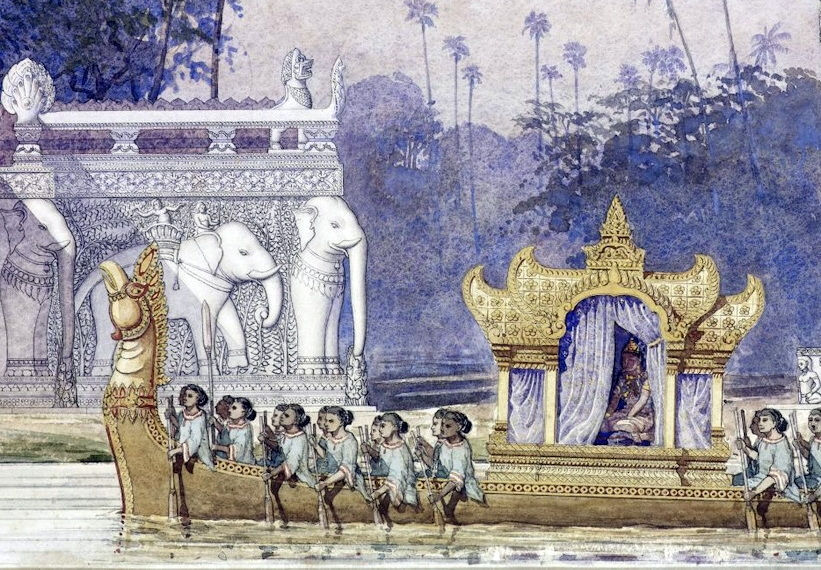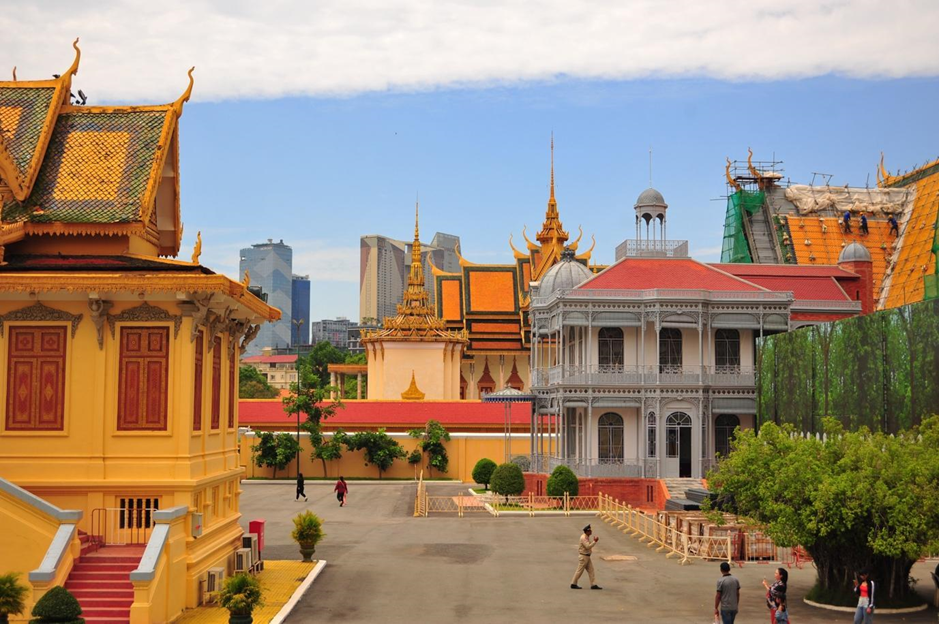Cambodia & History: Louis Delaporte, the visionary who brought Angkor to Paris
- Christophe Gargiulo

- Jul 23
- 4 min read
In the annals of 19th-century exploration, few figures are as daring and paradoxical as Louis Delaporte. A naval officer, artist, explorer and, above all, a fervent defender of ancient Khmer art, Delaporte left a mark that has stood the test of time, much like the bas-reliefs he designed under the Cambodian sun.
His obsession with the ruins of Angkor not only transformed his own life, but also changed the way France, and by extension the West, would perceive the splendours of Southeast Asia.
Louis Marie Joseph Delaporte was born in Loches, France, in 1842, the son of a provincial lawyer. His destiny seemed clear: a military career in the navy. However, after entering the Naval Academy in Brest in 1858, Delaporte suffered from seasickness and severe anxiety, two traits that ultimately pushed him towards more unusual horizons.
The turning point came in 1866, when Delaporte, already recognised for his talents as a draughtsman, was recruited to take part in the historic French expedition on the Mekong, under the command of Captain Ernest Doudard de Lagrée and Lieutenant Francis Garnier. The official objective of the mission was to map the navigability of the Mekong between Saigon and Yunnan, China, in search of potential colonial and trade routes. But for Delaporte, its lasting significance lay elsewhere: in his sublime encounter with Angkor Wat.

With his sketchbook in hand, Delaporte explored the ruined temples and collapsed towers of Angkor, capturing their grandeur with a mixture of wonder and reverence. He later wrote:
"I admired both the bold and grandiose design of these monuments and the perfect harmony of all their parts. Khmer art... remained the most beautiful expression of human genius in this vast region of Asia.‘
Delaporte's illustrations would later illustrate Garnier's account of the expedition, firing the imagination of Europeans with images of a ’lost civilisation." The Mekong expedition marked a turning point in colonial, archaeological and artistic circles.
After the expedition and an interruption due to the war, Delaporte's fascination with the ruins of Angkor intensified until it became his life's mission.
In 1873, supported by the Geographical Society and several French ministries, he led a new expedition to Cambodia and Vietnam. His goals were ambitious: to map the Mekong River in greater detail and, above all, to collect Khmer artworks (sculptures, lintels and reliefs) for display in France.
With a small team and official gifts, Delaporte set out to acquire nearly seventy Khmer artworks, as well as plaster casts and detailed sketches. His expeditions, marked by logistical obstacles and considerable controversy, highlighted the tensions between scientific objectives, colonial aspirations and personal zeal.

Upon his return to France, Delaporte's triumph was momentarily marred when the Louvre refused his collection, wary of these ‘exotic curiosities’ that contrasted with the museum's interest in Greco-Roman and Renaissance wonders. Undeterred, Delaporte organised exhibitions at the Château de Compiègne, then, during the 1878 Universal Exhibition in Paris, in the vast halls of the Palais du Trocadéro.
The reaction was transformative. Parisians flocked to see the mysterious heads of gods and giants, the finely carved lintels of Apsaras and the vast panoramic drawings of the towers of Angkor bathed in tropical light. A fascination with Khmer art was awakened, placing Angkor alongside Egypt and Greece in the pantheon of ancient wonders as seen by the French.
This momentum enabled Delaporte, after his last mission in 1881-1882, to create and direct the Indochinese Museum at the Trocadéro, precursor to the current Guimet Museum, where he worked until his retirement in 1924.
At the heart of Delaporte's legacy is his artistic talent. His watercolours, pencil sketches and plaster casts were not mere souvenirs, but tools for education and mythical creation.

Reproduced in illustrated books, displayed at world fairs and cited in subsequent archaeological works, they shaped Europeans' view of Angkor. In the 1930s, Delaporte's drawings even guided the restoration of the That Luang stupa in Vientiane, Laos, restoring its original elegance after a botched initial reconstruction.
Delaporte's art, combining scientific detail and romantic sensibility, invited France to consider Khmer culture as equal to that of ancient Greece or Rome. He wrote: "It is, in short, another form of beauty. ‘ For a generation accustomed to the ’majestic colonnades" of classical ruins, medieval, tropical, labyrinthine Angkor was a revelation.
However, Delaporte's efforts were not without controversy. The legitimacy of removing artefacts from their Cambodian context was debated even in his own time. Later, explorers and academics, such as Lucien Fournereau and Dr Jules Harmand, questioned Delaporte's archaeological skills, suggesting the need for greater scientific rigour in documentation and collection. The shadow of colonial appropriation hangs over his legacy, creating a tension between preservation, scholarship and exploitation.
Furthermore, after Delaporte's death in 1925, many of his favourite casts were neglected, relegated to damp warehouses or scattered according to changing fashions in museums. It is only in recent decades, with the renewed interest in global art history, that Delaporte's pioneering vision has been re-evaluated and celebrated.
Louis Delaporte's life was shaped – and consumed – by his quest for dialogue between France and the ancient world of Angkor. Today, his sketches, casts and the objects he collected form the backbone of the Khmer collections at the Guimet Museum and other institutions. His work continues to inspire exhibitions, academic work and even debates on restitution.
But above all, Delaporte's passion has allowed the wonders of Southeast Asia to be seen, appreciated and studied not as “other”, but as equals to Europe's classical heritage. His travels, fraught with danger and marked by scepticism, ultimately brought Angkor to the world stage: a bridge between the tropical forests of Cambodia and the salons of Paris, built not with stone or ivory, but with vision, artistic sensibility and unwavering dedication.
Sources:
Voyage d'exploration en Indo-Chine (illustrations, 1873)
Voyage au Cambodge : l'architecture khmère (1880)
Les monuments du Cambodge (1924)







Discover the thrill of bdsm toys your gateway to heightened pleasure and bold fantasies. Whether you’re new or experienced, our collection of cuffs, floggers, collars, and more will unlock unforgettable sensations. Safe, exciting, and oh-so-satisfying. Ready to play? Your kinkier side is just a toy away.